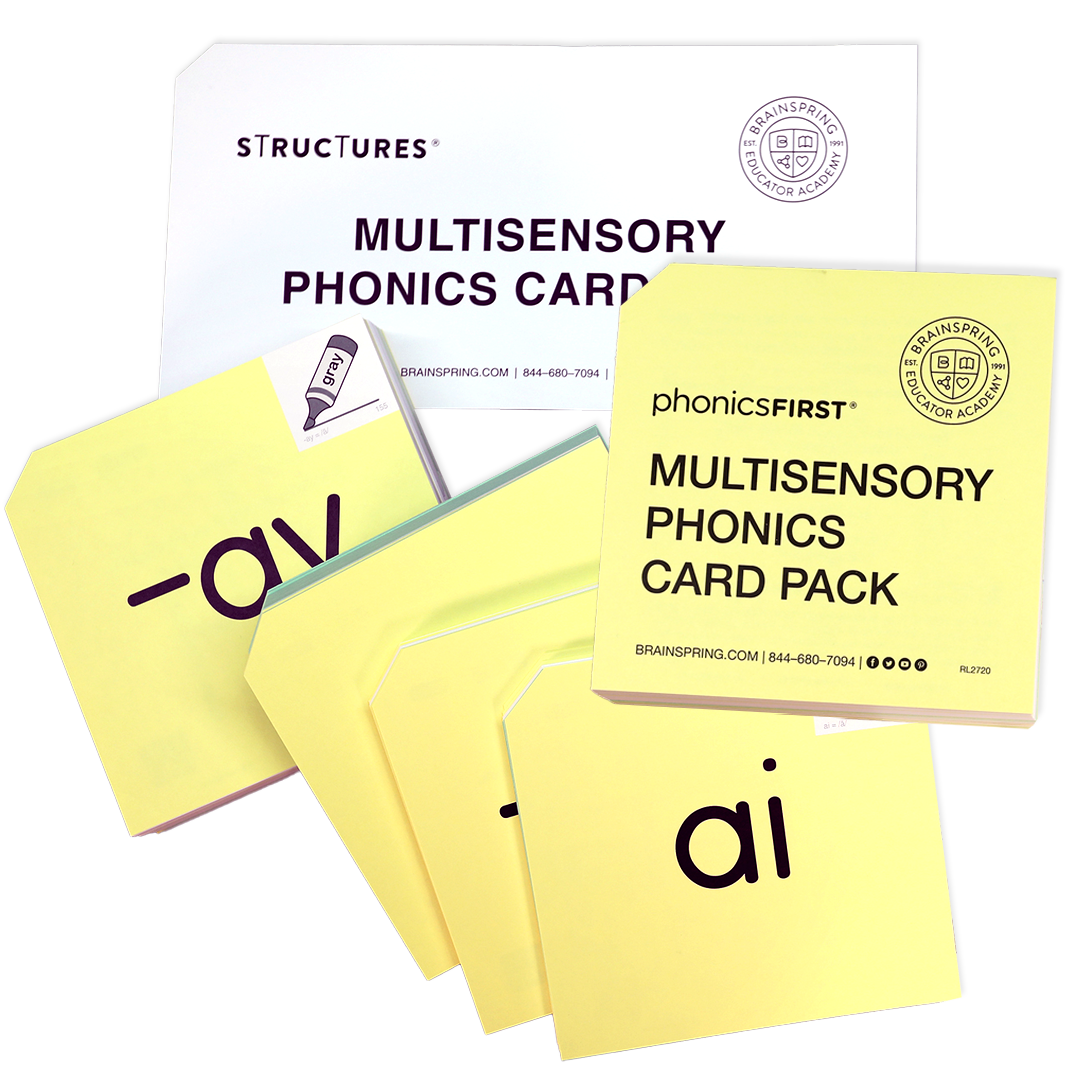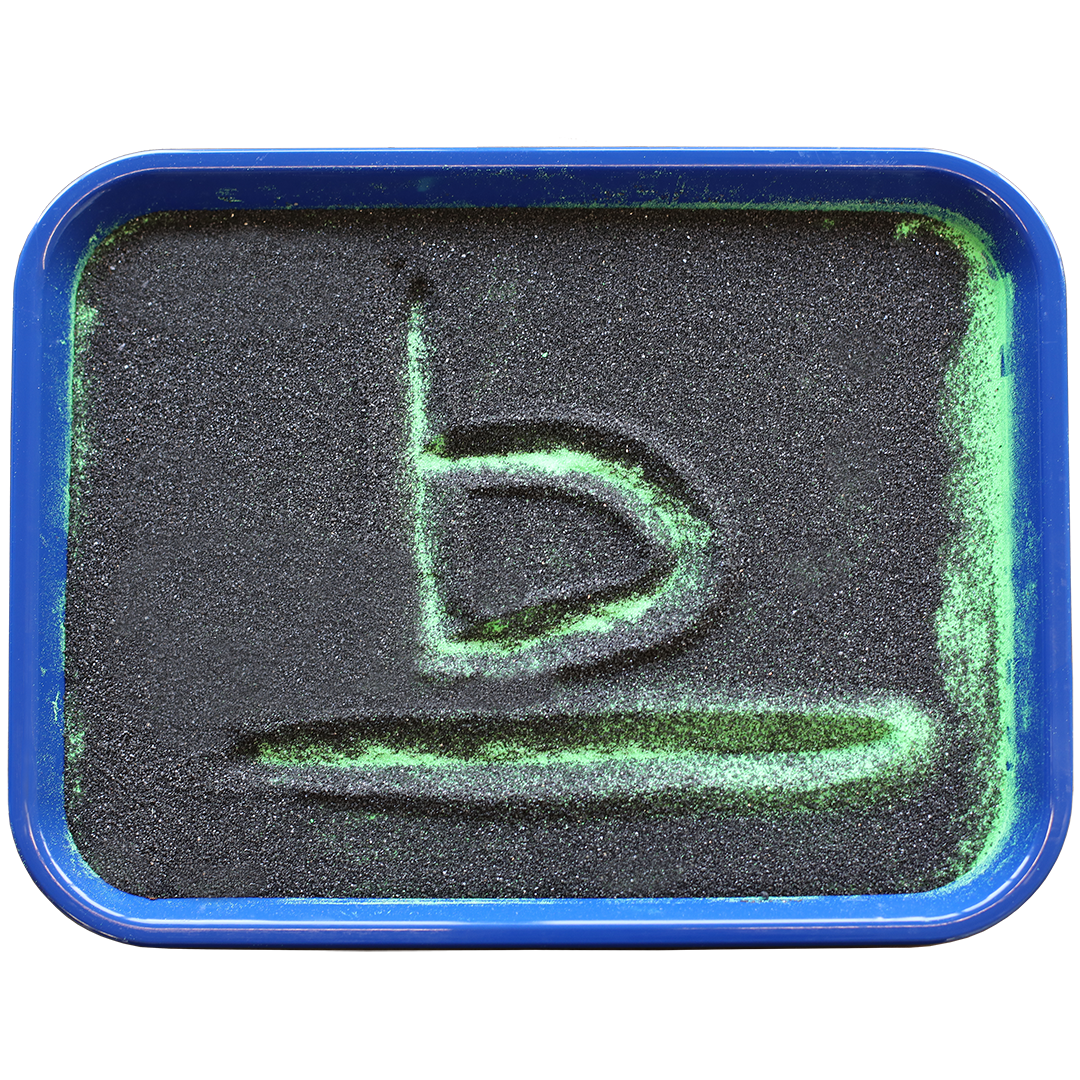What is the Orton-Gillingham Three-Part Drill?
Posted by Brainspring on 11th Nov 2024
The Three-Part Drill is an excellent way to practice previously taught sounds for reading, spelling, and fluency. After a new skill is taught it becomes part of the Three-Part Drill. In Brainspring’s Phonics First and Structures courses, you learn the basics of the Three-Part Drill and have the opportunity to practice so that you can jump right into the process with your students. Once mastered, students will enjoy fun adaptations easily added to your instruction.
What is the Three-Part Drill?
The Three-Part Drill is a multisensory exercise used to strengthen students' phonological and phonemic awareness. It involves three key steps: the visual drill, auditory drill, and blending drill. Each part of the drill works together to provide practice that reinforces letter-sound associations, sound discrimination, and correct letter formation.
By engaging students' visual, auditory, and blending senses, the drill creates a stronger, more lasting connection between the sounds and symbols of language. This makes it important for students struggling with phonics, as well as for any learner building their literacy skills.
The Three Parts of the Drill
Visual Drill
The Visual Drill focuses on reinforcing the connection between letters and sounds. In this part of the drill, students are presented with flashcards or written letters and are asked to say the corresponding sound. This builds the ability to quickly and accurately recognize letter-sound associations.
The Visual Drill also helps students recognize and distinguish letters by sight, which is particularly useful for learners who have dyslexia or struggle with letter reversals (such as confusing "b" and "d"). By repeatedly seeing and saying each letter, the student can strengthen their ability to identify and correctly associate letters with their sounds.
Auditory Drill
The Auditory Drill focuses on sound recognition and production. In this exercise, the teacher says a sound, and students must identify and write the corresponding letter. This part helps students focus on hearing and isolating individual sounds, which is important for phonemic awareness.
The Auditory Drill also emphasizes listening carefully to small differences between similar sounds (like /p/ and /b/). By doing this listening practice, students can better differentiate sounds and match them to the correct letters.
Blending Drill
The Blending Drill is designed to reinforce sound-letter associations through touch and movement. Students are asked to trace or write letters while simultaneously saying the sound. This helps reinforce the memory of each letter and sound by physically engaging students in the process.
This part of the drill is more effective for students who are hands-on learners. It allows them to feel the shape of each letter while connecting it to its correct sound. By practicing this drill, students can get a better understanding of letter formation and sound-symbol relationships.
Benefits of the Three-Part Drill
The Three-Part Drill is rooted in multisensory learning. By involving the visual, auditory, and blending senses, the drill supports students in building connections between the sounds and symbols of language. This multisensory approach is highly effective, particularly for those who struggle with dyslexia or other learning differences because it uses different sensory channels to reinforce memory and understanding.
For example, students who have difficulty remembering a sound associated with a letter can benefit from physically tracing the letter in a sand tray while saying the sound out loud. This combines the use of seeing, hearing, and touching, which reinforces neural connections and enhances recall.
The Importance of Repetition in the Three-Part Drill
Repetition is an important part of the Orton-Gillingham approach and is especially important in the Three-Part Drill. Each part of the drill is repeated consistently, which helps students practice and internalize sound-symbol relationships, phonemic awareness, and proper letter formation. This repetition helps to strengthen memory and builds the skills needed for fluent reading and accurate spelling.
For struggling readers, consistent practice with the Three-Part Drill offers the reinforcement they need to overcome learning barriers and gain confidence. Regular repetition boosts automaticity, which is the ability to recognize letters and sounds without conscious effort. The repetitiveness of the Three-Part Drill provides a stable base for literacy development and is an important tool for early education.
Three-Part Drill Activity Extension Ideas
Visual Drill Extension Ideas
- Show the cards and ask specific students or groups to say the sounds (girls, boys, wearing blue, etc.)
- Deal the letter cards face up to students in a small group (like dealing cards in a card game). Ask each student to say the sound of the card that is dealt to them.
- Ask students to use fun voices as they say the sound of the cards. Prompt them to whisper or shout the sound, plug their nose and say the sound, etc.
- Ask struggling students to become the “echo.” After the group says the sound, those students echo their response.
Auditory Drill Extension Ideas
- Fill a sand tray filled with sand, rice, cereal, shaving cream, pudding, fingerpaint, etc.
- Gel boards or Magna doodles.
- Using whiteboards or chalkboards, students can practice “trace and erase.” Students write the letter for the sound they hear, underling the letter with its sound. Then students trace and erase the letter with their finger while saying the letters name and sound again. To keep the student’s hands clean, you can cut the fingertips off of the small ‘magic’ gloves from the dollar store. Give each student a special ‘eraser’ to put on their finger.
- Use sealed plastic bags with fingerpaint, hair gel, or colored glue as a tactile surface to write the letter and underline the letter with its sound. Tape the bag to a piece of cardboard.
- Using a piece of fine sandpaper, students can trace the letter, feeling its shape but not seeing the letter. To incorporate a visual component, provide students with sandpaper cut into the shape of the letters, or write the letter on the sandpaper, ask them to ‘find’ the /d/ and trace the letter as they say it. You can also include starting points and arrows for correct letter formation with this strategy.
- Writing the letters on the carpet, their leg, or on another student’s back (they won’t be able to “see” the letters, but it is excellent practice).
- If you repeat the same sound multiple times, you can observe all the students form the letters correctly.
Blending Drill Extension Ideas
- Ask students to think of a longer word for the detached syllables which appear on the blending.
- Use the echo or fun voices from the Visual Drill (above).
- Put rhymes on the blending board and have students practice rhyming by changing only the first card.
- Ask individual students to read the board as opposed to the group reading.
The Three-Part Drill offers a structured approach to building literacy skills through a combination of visual, auditory, and blending activities. By consistently reinforcing letter-sound associations and phonemic awareness, this drill helps students internalize reading and spelling skills needed for fluency. By adding fun twists to drills and continuous practice, teachers can create an engaging and supportive environment that helps build confidence and comprehension.
Additional Resources:
- Multisensory Monday: Fun Blending Activities
- Multisensory Monday- Orton-Gillingham Blending Blocks
- Multisensory Monday- Extra Activities for Word Blending
Written by Ingrid Hartig
Ingrid is a Master Instructor with Brainspring’s Educator Academy
Brainspring has proudly supported the educational community for more than 25 years.
Our Educator Academy provides educators in grades K-12 with comprehensive MSL Professional Development courses. Learn more about our in-person and online professional development.
The Learning Centers support students through one-on-one, multisensory tutoring sessions. Learn more about our in-person (available in Southeast Michigan) and nationwide online tutoring.


